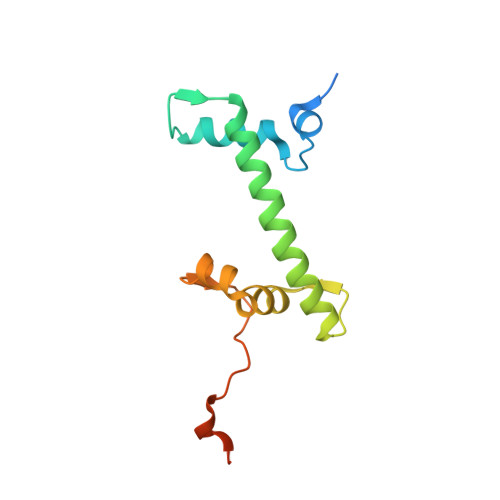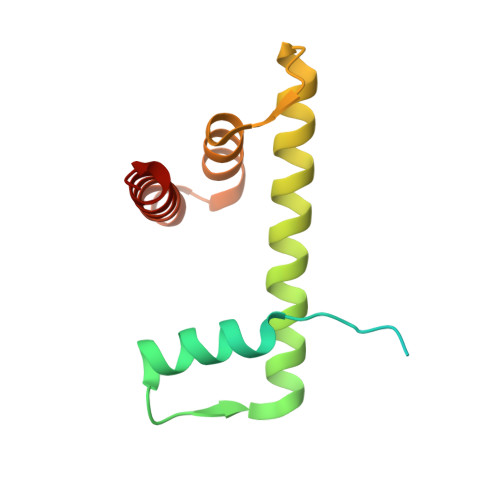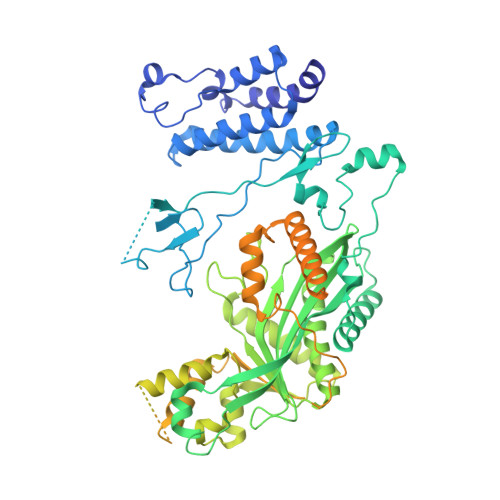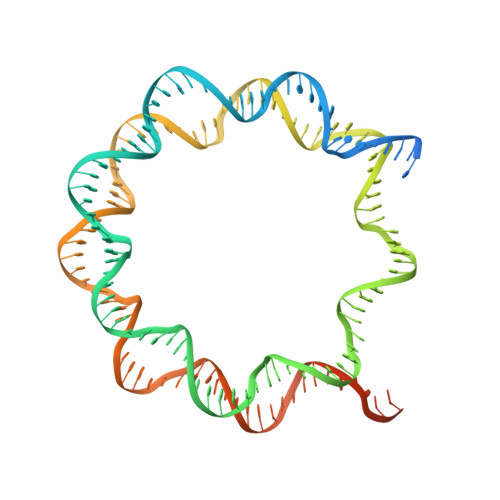Epigenetic mechanisms to propagate histone acetylation by p300/CBP.
Kikuchi, M., Morita, S., Wakamori, M., Sato, S., Uchikubo-Kamo, T., Suzuki, T., Dohmae, N., Shirouzu, M., Umehara, T.(2023) Nat Commun 14: 4103-4103
- PubMed: 37460559
- DOI: https://doi.org/10.1038/s41467-023-39735-4
- Primary Citation of Related Structures:
8HAG, 8HAH, 8HAI, 8HAJ, 8HAK, 8HAL, 8HAM, 8HAN - PubMed Abstract:
Histone acetylation is important for the activation of gene transcription but little is known about its direct read/write mechanisms. Here, we report cryogenic electron microscopy structures in which a p300/CREB-binding protein (CBP) multidomain monomer recognizes histone H4 N-terminal tail (NT) acetylation (ac) in a nucleosome and acetylates non-H4 histone NTs within the same nucleosome. p300/CBP not only recognized H4NTac via the bromodomain pocket responsible for reading, but also interacted with the DNA minor grooves via the outside of that pocket. This directed the catalytic center of p300/CBP to one of the non-H4 histone NTs. The primary target that p300 writes by reading H4NTac was H2BNT, and H2BNTac promoted H2A-H2B dissociation from the nucleosome. We propose a model in which p300/CBP replicates histone N-terminal tail acetylation within the H3-H4 tetramer to inherit epigenetic storage, and transcribes it from the H3-H4 tetramer to the H2B-H2A dimers to activate context-dependent gene transcription through local nucleosome destabilization.
Organizational Affiliation:
Laboratory for Epigenetics Drug Discovery, RIKEN Center for Biosystems Dynamics Research, 1-7-22 Suehiro-cho, Tsurumi, Yokohama, 230-0045, Japan.




















